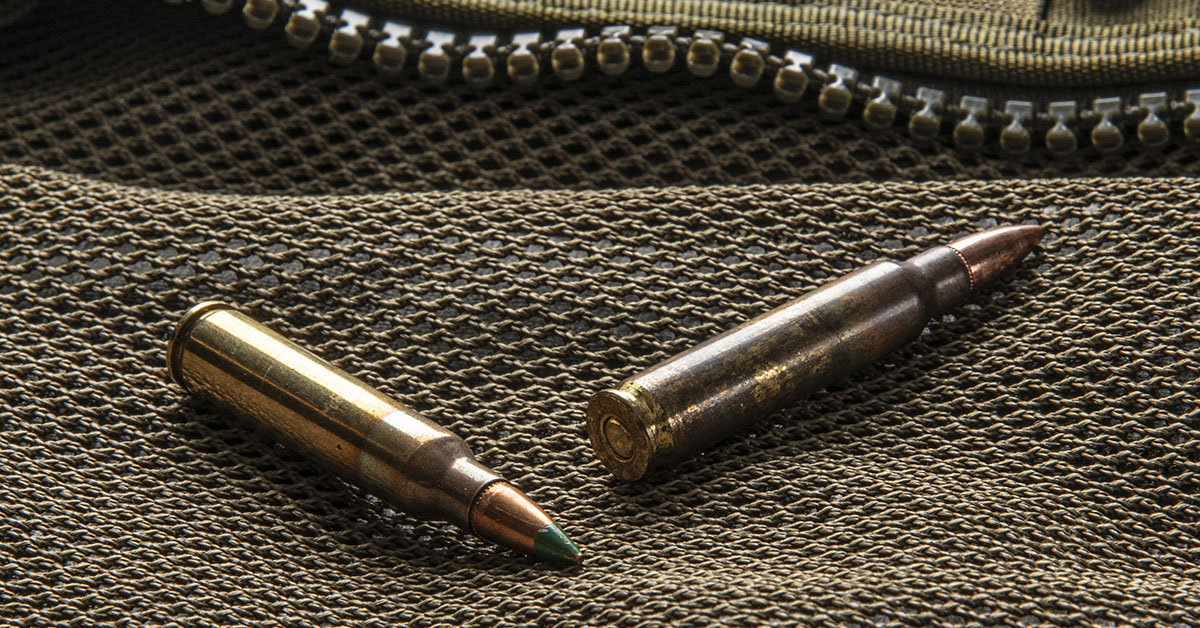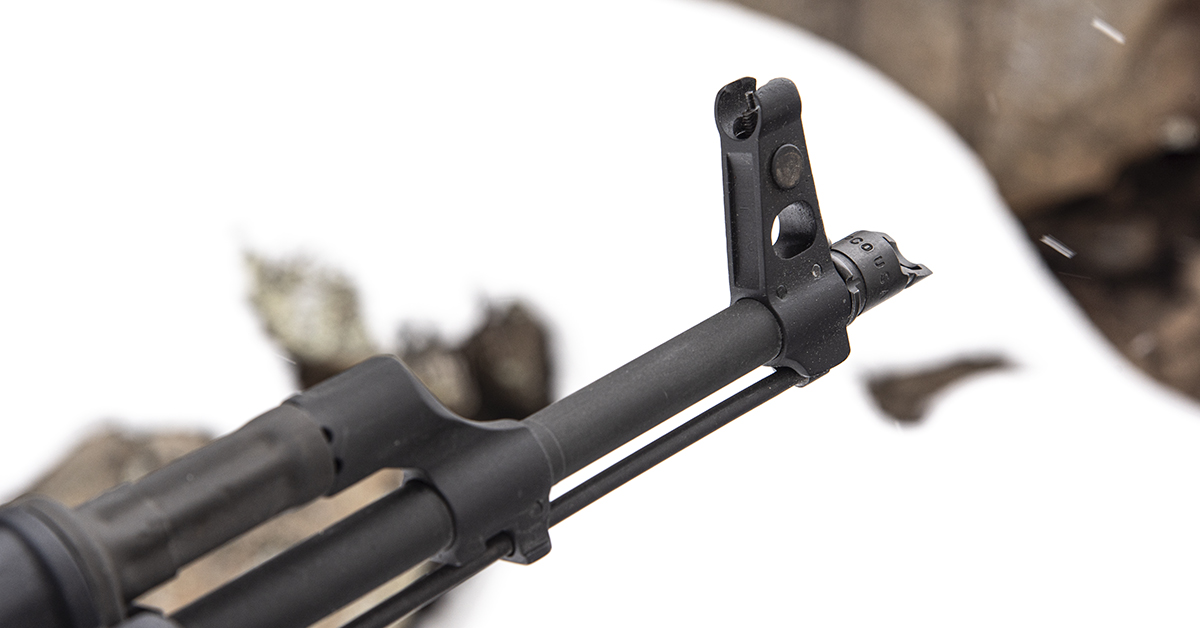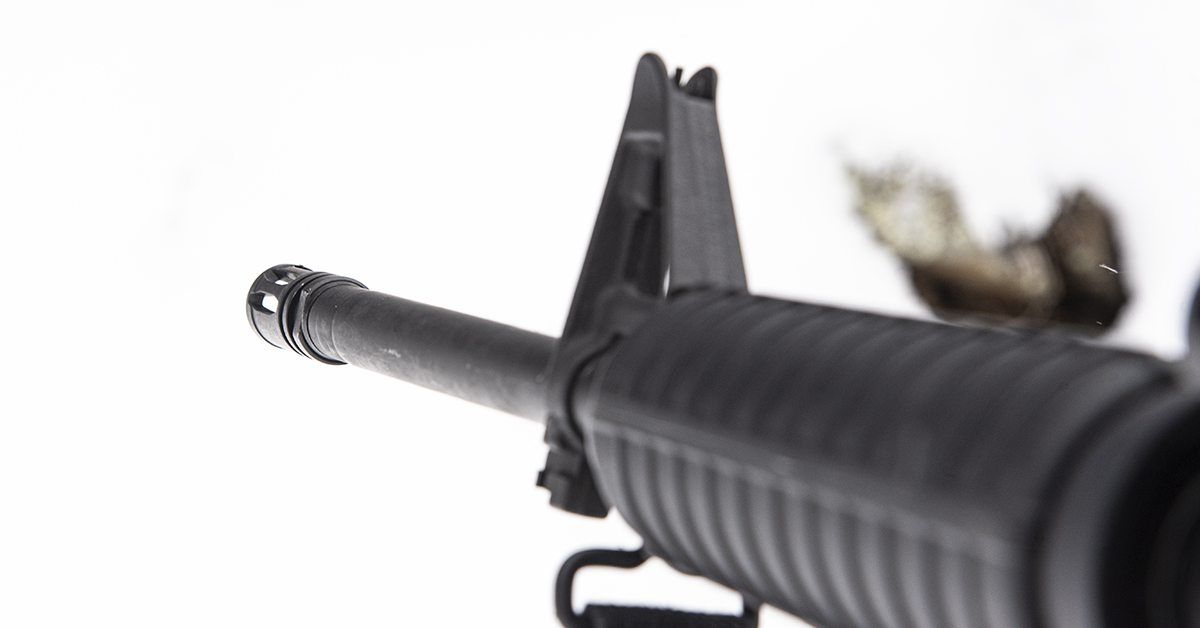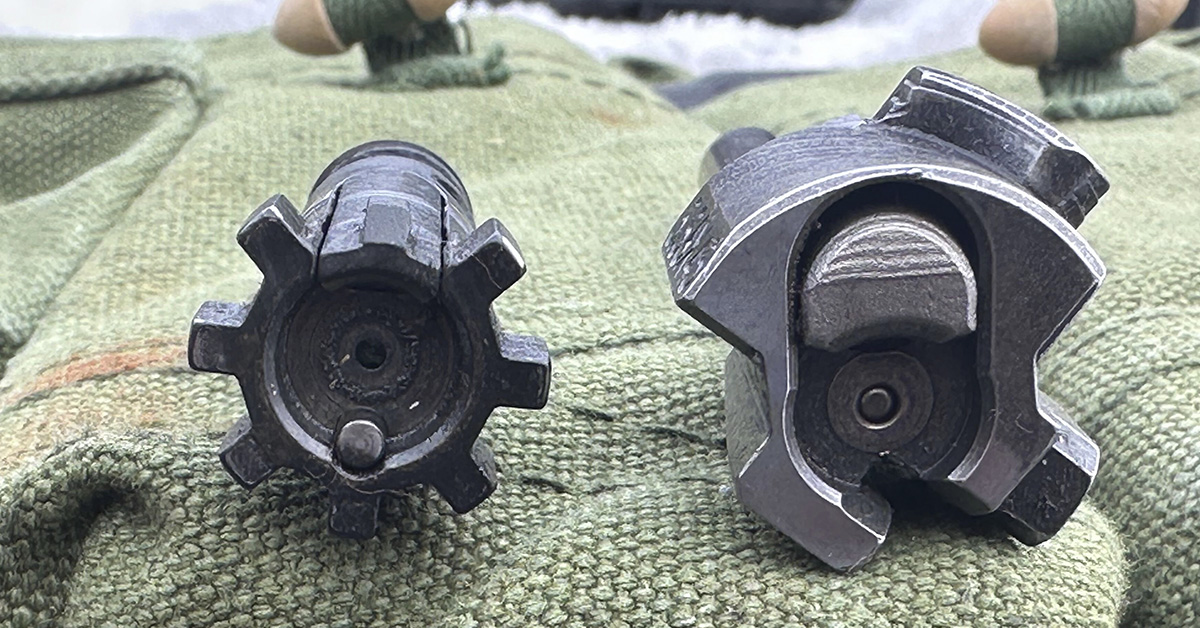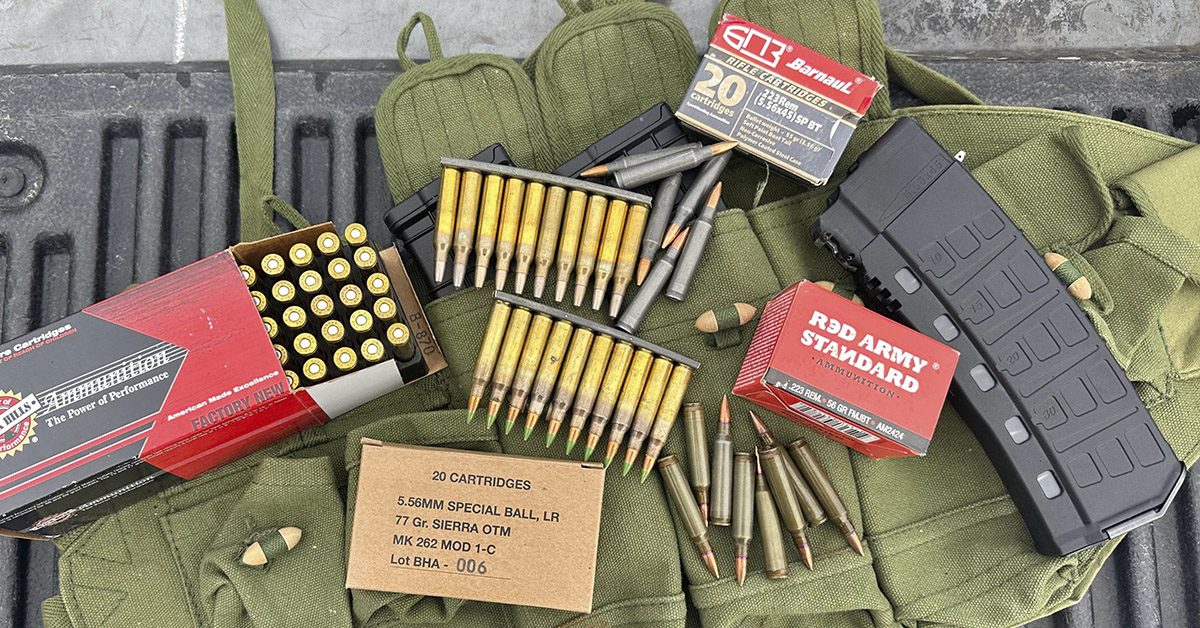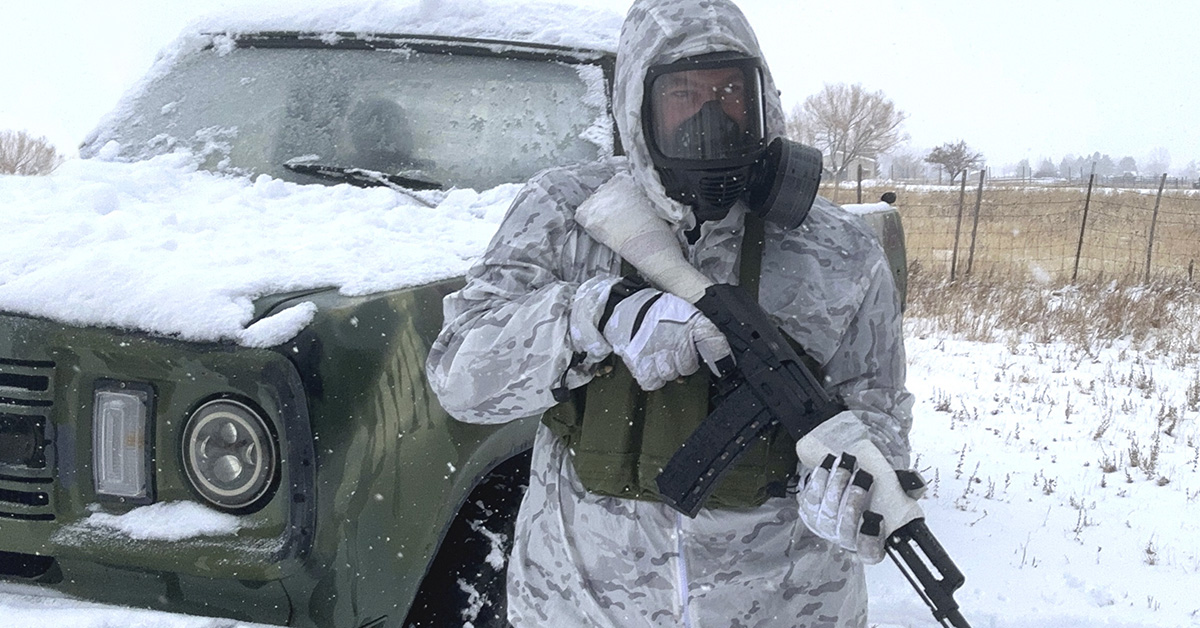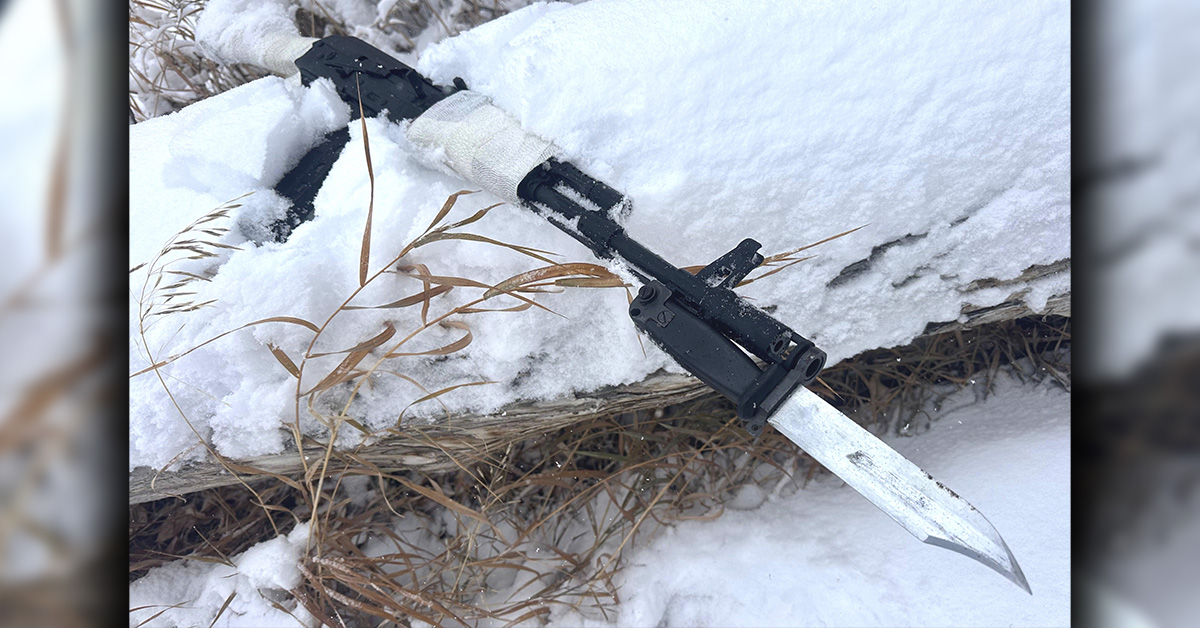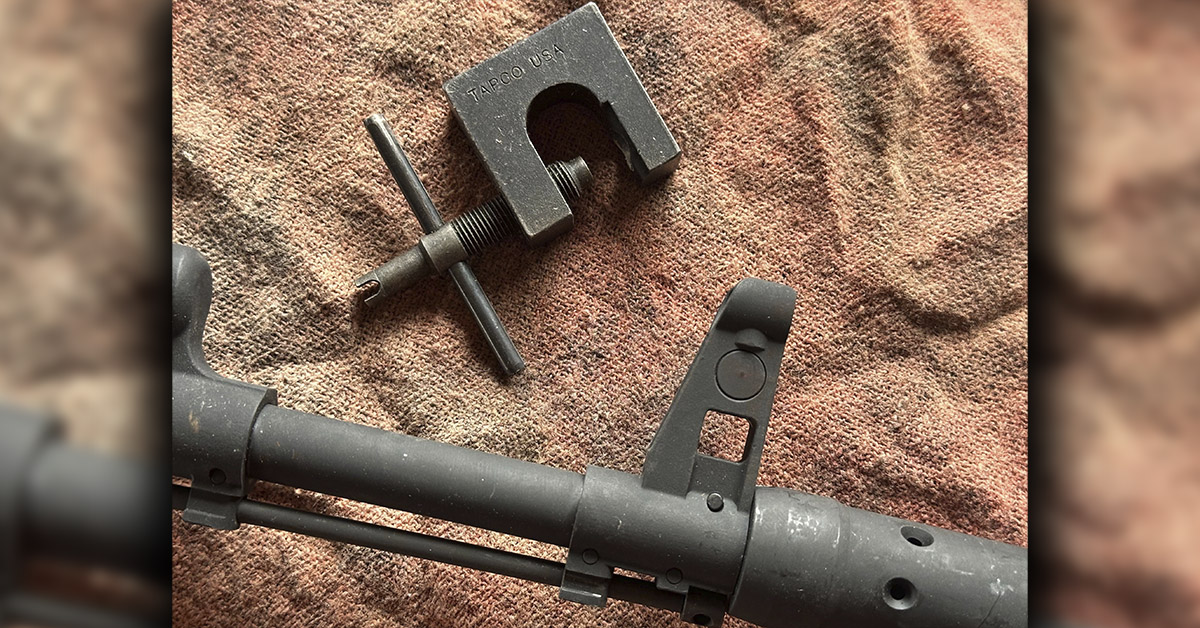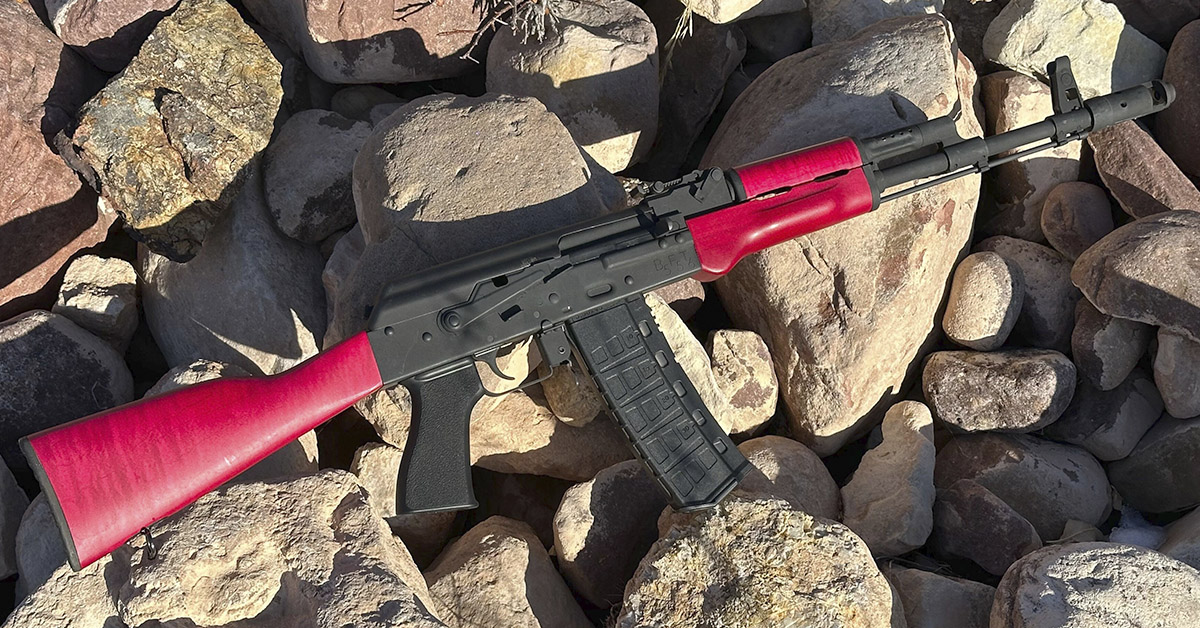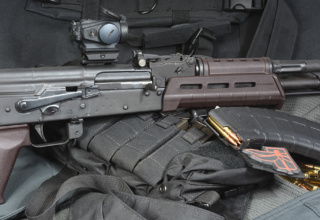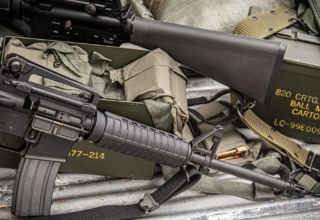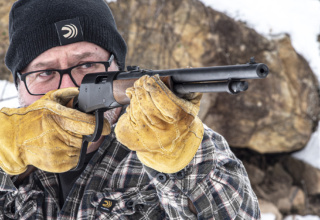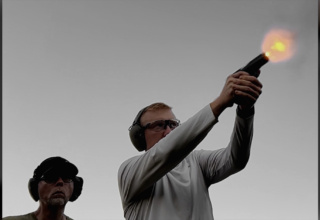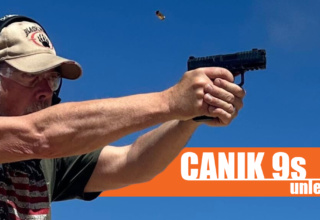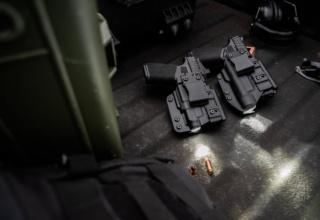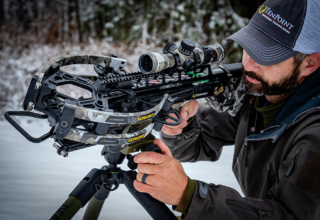With its blend of 5.56 NATO chambering and sledgehammer-tough AK construction, is there a better candidate for the worst of times than the Century Arms BFT 556 rifle?
by Paul G Markel
Before I had completed the Apocalypse Pistol article for our intrepid editor, I knew that I wanted to do an Apocalypse Rifle review using what would be essentially the same criteria. Among these specifications would be hard use in a potential TEOTWAWKI, civil unrest, or societal collapse situation.
Subsequently, we are talking about the most severe of potential environments: extreme cold, dust/sand/debris, EMP, and the disruption of the standard supply chain. This is certainly a lot to take into consideration, so, let’s take it step by step.
Ammo Choice: 5.56mm NATO
The rifle in question must be suited for use both as a personal defense weapon and one that might be used to dispatch varmints or pest animals. As I reside within the United States of America, the choice for caliber was really not that difficult. As we move into 2025, the most prevalent centerfire rifle cartridge in the USA is the 5.56mm NATO, or the .223 Remington.
The aforementioned cartridge is manufactured to the tune of hundreds of millions of rounds each year. Whether you are buying, trading, scrounging, or exercising battlefield pickup, the 5.56mm/.223 is going to be the most prevalent rifle round you find from coast to coast, emotional favorites notwithstanding. If I were in Asia or Africa, the cartridge choice would likely vary, but then again, how many inhabitants of those continents are armed citizens?
And so, with the cartridge choice decided upon, if you had not already looked at the accompanying photos, you would have assumed that I would choose an AR variant. Let me offer you congratulations for having the intellectual courage to have read to this point.
Robust, Reliable, Accurate (in that order!)
As for our previously established criteria, that of hard use under less-than-ideal conditions, the rifle must have a proven track record for withstanding harsh climates and rough use. It should also be extremely simple to operate, field strip, and to maintain. Accuracy comes third, not first on the list, although that is not really a big concern. Rifle barrels manufactured with 21st century technology have more inherent accuracy than the majority of those who would pick up said rifles are capable of shooting.
While there have been a few others, such as the FN FAL and the G3, when it comes to fighting rifles during the last 70 years or so, the two constant rivals have been the Stoner-designed AR-15 and its children and the Kalashnikov AK-47 and its myriad clones. To be fair, Mikhail Kalashnikov had about a ten-year head start on Gene Stoner. The Armalite version of the AR-15 was officially released in 1956, and the AK-47 went through military trials in ’47 and ’48 before being officially adopted by the USSR in 1949.
While the AR-15/M-16 had a very public break-in period and drew the ire of many who used it early on in the jungles of Vietnam, the Russians didn’t have that public shaming issue. Thanks to the secrecy behind the Iron Curtain, engineers of the Soviet Union were able to make improvements to the AK-47 and release the AKM, or “Modernized” version, without much external scrutiny.
While I am perfectly aware that I am overturning some apple carts by choosing a Kalashnikov design over a Stoner, keep in mind this is my Apocalypse Rifle. This gun is supposed to endure the harshest environments. AR-15 adherents are fond of using the “accuracy” test to prove that the Stoner guns are better than Kalashnikovs, claiming that the AK is a “3 to 4 MOA” rifle. Sure, when fired from a bench by an expert hand, will the average .223 Stoner group better than the average AKM? In 9 out 10 trials, the answer would likely be “yes.” Also, “So what?”
Fighting and survival are not accomplished from the shooting bench. Rifles used for fighting need to be reliable first. One thing that AR fans cannot successfully argue is that the Stoner system is superior to the Kalashnikov in the harsh environment and hard-use tests.
From a mechanical standpoint, the bolt of the Kalashnikov is built tougher/thicker and is less prone to failure. Bolt failures are, indeed, one of the hard-use issues for the AR-15 design. To be fair, swapping out an old bolt for a new one in an AR is an easy task. But you must have a spare bolt to do so. Remember, in the apocalypse situation, we cannot just put in a quick order to Brownells for a new bolt.
Century Arms BFT 556
Full disclosure…in a perfect world, I would choose the 5.45x39mm AK over one chambered in 5.56mm, and Century Arms makes a BFT 74. But this is not a perfect world and 5.45x39mm ammunition is much more difficult to come by than the American .223 Remington.
For an American Apocalypse Rifle, the BFT 556 from Century Arms has much to recommend it. This particular rifle stands out from all the other rifles in their inventory in that it has uniquely colored hardwood furniture. The stock and forend have a reddish or rosewood finish. As I was reviewing this rifle in the winter up in the Rocky Mountains, I chose to put a winter camouflage on the gun using white-colored “vet wrap.” The new BFT 556 is a true semi-auto AK with all the controls where you would expect them to be. As for the factory specs:
- 5.56x45mm (.223 Remington)
- Bulged and forged trunnion w/1.5mm stamped steel
- Polymer US Palm grip
- Forged and bulged 4140 steel front trunnion
- Manganese phosphate finish per Mil-DTL-16232
- Chrome-lined chrome-moly 4150 steel barrel
- AK-74 style muzzle brake
- 30-round magazine standard
- Adjustable front and adjustable rear, optic-ready side mount
- RAK-1 enhanced trigger
- Hardwood stock and forend
- Enhanced manual safety with bolt hold-open
- Cleaning rod / bayonet lug
Feeding the Beast
Thanks to the government in DC, over the last four years, the price of .223/5.56 jumped from about 30¢ for brass-cased training ammo to an average of 50¢ per shot for the same thing. Not so long ago, you could get steel-cased .223 ammo for about 20¢ a shot. Of course, shooting steel-cased ammunition in the standard AR/M4 is going to result in stuck cases in the chamber. You better have a stiff range rod with you or you will be done shooting that gun for the day. Kalashnikov rifles are born to shoot steel-cased ammunition.
As I was preparing this review, I did some online research and found that steel-cased .223 Remington is averaging 10¢ a shot less than comparable brass-cased loads. When you purchase ammo by the case, as any serious shooter does, that is a considerable savings if you can make it run in your rifle.
For the range testing portion of this review, I took a wide variety of .223 Remington and genuine 5.56x45mm NATO ammunition out of the big box. From the steel side of the house, I used the Century Arms “Red Army Standard” with green steel cases and some Barnaul ammunition with gray steel cases.
As for true brass cased ammunition, represented were Black Hills 77-grain BTHP, US Army M882 “green tip,” Mk262 MOD 1-C, and even some MILSPEC frangible produced for the military by Winchester.
In addition to the AC Unity Gen 3 magazine that came with the rifle, I purchased three additional AC Unity 5.56mm AK magazines. The bolt and bolt carrier were properly lubricated with FrogLube Extreme prior to the live-fire testing.
I ran the BFT 556 on the range over three separate sessions before sitting down to pen this review. The majority of the ammunition fired was the steel-cased RAS and Barnaul — say 60% to 70% —with the rest being the aforementioned brass-cased loads. Whether genuine .223 Remington or the MILSPEC 5.56mm NATO, not a single stoppage or malfunction occurred. My estimated round count was between 450 and 500 rounds fired in total. All four magazines fed and functioned properly.
Apocalypse Considerations
While the temperatures were not arctic or nuclear winter, my range sessions were below freezing when I took the gun out into the snow. During a societal breakdown, civil unrest, et cetera, one might be called upon to wear a Field Protective Mask (gas mask). For this portion of the testing, I would use a CM-6M from Mira Safety.
Whether or not you choose to equip yourself with a field protective mask, you need to understand that you absolutely must train with it. In addition to shooting with a mask on my face, I also spent some time driving my truck while wearing it. Firing the rifle using only traditional iron sights took some effort with the mask in place. The normal cheek/stock weld is not really possible. I found that by canting the rifle inboard I was able to line up the sights.
Additionally, a true fighting rifle needs to accept a bayonet. The BFT 556 does, indeed, have a bayonet lug, so I mounted a Chicom surplus AKM Type II blade onto the rifle. You can tell the difference between the Chicom and Russian versions because the Chinese did not put the “wire-cutter” hole in their version — most likely because it reduced the cost of production.
One other consideration you might keep in mind if you are going to own and operate AK-style rifles with traditional sights is an AK sight tool. When you BZO (Battlesight Zero) Kalashnikov rifles, both the windage and elevation adjustments are made on the front sight. Minus a dedicated AK front sight tool, you are going to have a difficult time accomplishing that task. There are a variety of such tools available and they all function basically the same way and are not expensive.
Final Considerations
The Achilles heel of the BFT 556 might be that there are nowhere near as many magazines available for these rifles as there are for the AR-15 style or even a 7.62x39mm AKM. I will likely be ordering a few more for this gun soon as my comfort level for a magazine-fed firearm is to have a minimum of 6 mags for said gun.
Also, to be fair to the AR folks, it is much easier to replace worn or broken parts on the AR-15 than it is on the Kalashnikov; however, the point of this exercise was to choose a rifle that was not likely to break or wear out, even when used in the harshest conditions.
As for the BFT 556, the use of the mildly recoiling .223 Remington cartridge combined with the gas-piston AK action and the superior AK-74 style muzzle brake translates to the smallest amount of felt recoil. From the side view, the muzzle rise during recoil is barely perceptible. Seriously…put your shoulder into the rifle and it does not move off target, even during rapid fire shooting.

